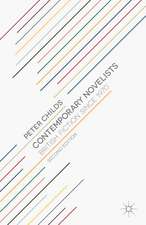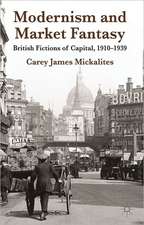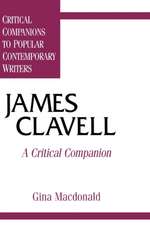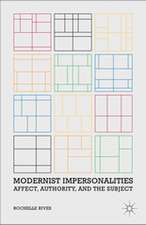A Reader's Companion to the Fiction of Willa Cather
Autor John March Editat de Marilyn Arnold, Debra Lynn Thorntonen Limba Engleză Hardback – 29 dec 1993 – vârsta până la 17 ani
Preț: 316.05 lei
Preț vechi: 532.07 lei
-41% Nou
Puncte Express: 474
Preț estimativ în valută:
60.49€ • 62.91$ • 50.69£
60.49€ • 62.91$ • 50.69£
Carte tipărită la comandă
Livrare economică 14-28 martie
Preluare comenzi: 021 569.72.76
Specificații
ISBN-13: 9780313287671
ISBN-10: 0313287678
Pagini: 880
Dimensiuni: 156 x 235 x 47 mm
Greutate: 1.36 kg
Editura: Bloomsbury Publishing
Colecția Greenwood
Locul publicării:New York, United States
ISBN-10: 0313287678
Pagini: 880
Dimensiuni: 156 x 235 x 47 mm
Greutate: 1.36 kg
Editura: Bloomsbury Publishing
Colecția Greenwood
Locul publicării:New York, United States
Notă biografică
John March earned degrees in Chemistry and in Library Science. After teaching mathematics and chemistry, he became Assistant Librarian in Bibliographic Research at the University of Oklahoma and later became Senior Bibliographic Researcher at Collier's Encyclopedia. He began collecting Cather material in the late 1940s.Marilyn Arnold is Professor Emeritus of English and was formerly Dean of Graduate Studies at Brigham Young University. She has published two books on Willa Cather and numerous articles on Cather and other American writers. She also lectures widely on Cather at national conferences.Debra Lynn Thornton is a PhD candidate at the University of New Mexico at Albuquerque. She has written on Eudora Welty and has presented papers on Willa Cather.
Cuprins
PrefaceIntroduction"Handbook of Willa Cather" by John MarchPreface and Key to Symbols for Primary SourcesA Reader's Companion to the Fiction of Willa Cather
Recenzii
[T]he Companion is impressive both for the knowledge of literature, art, and music Cather possessed, apparent in her many allusions, and for the detail of March's effort. The Companion makes one want to reread Cather's works more closely, or read those not yet read. Recommended for upper-division undergraduates, graduates students, and researchers.
Thousands of entries contained in this delightful literary reference work range from A (a French town visited by Claude Wheeler and David Gerhardt in One of Ours) to Zuni (the Sothwestern Indian pueblo and site of a tale of mission revolt told in Death Comes for the Archbishop).the Companion feels somewhat more like a lively dialogue, a complex conversation involving innumerable interconnections between Cather's short stories and novels and the continuing curiosities and concerns of her committed readership, than an alphabetically ordered dictionary.
Literary archaeologists of the future may be able to reconstruct the outlines and many of the details of Cather's fiction just from this comprehensive and readable guide. This volume will deservedly become a standard reference. March assumed readers would move from the fiction to his handbook; the editors believe, rightly, that this companion will be read on its own. It serves admirably to illuminate the range of Cather's allusions, to increase the reader's understanding of the cultures of which she writes, and to bring the reader back to the text with a deeper understanding.
Thousands of entries contained in this delightful literary reference work range from A (a French town visited by Claude Wheeler and David Gerhardt in One of Ours) to Zuni (the Sothwestern Indian pueblo and site of a tale of mission revolt told in Death Comes for the Archbishop).the Companion feels somewhat more like a lively dialogue, a complex conversation involving innumerable interconnections between Cather's short stories and novels and the continuing curiosities and concerns of her committed readership, than an alphabetically ordered dictionary.
Literary archaeologists of the future may be able to reconstruct the outlines and many of the details of Cather's fiction just from this comprehensive and readable guide. This volume will deservedly become a standard reference. March assumed readers would move from the fiction to his handbook; the editors believe, rightly, that this companion will be read on its own. It serves admirably to illuminate the range of Cather's allusions, to increase the reader's understanding of the cultures of which she writes, and to bring the reader back to the text with a deeper understanding.














